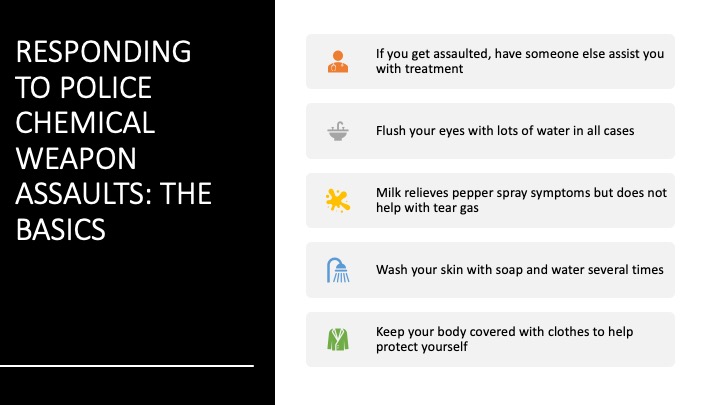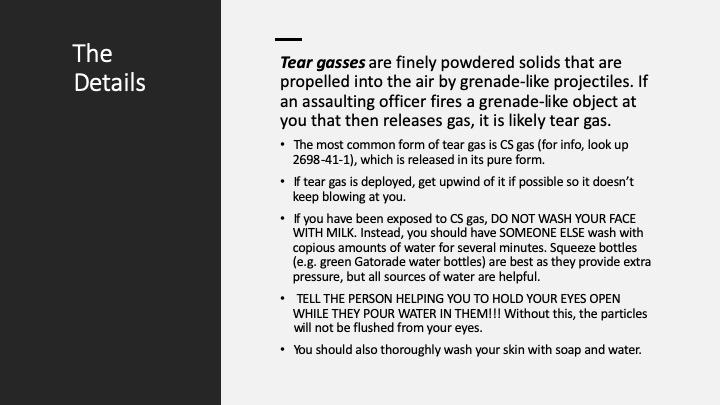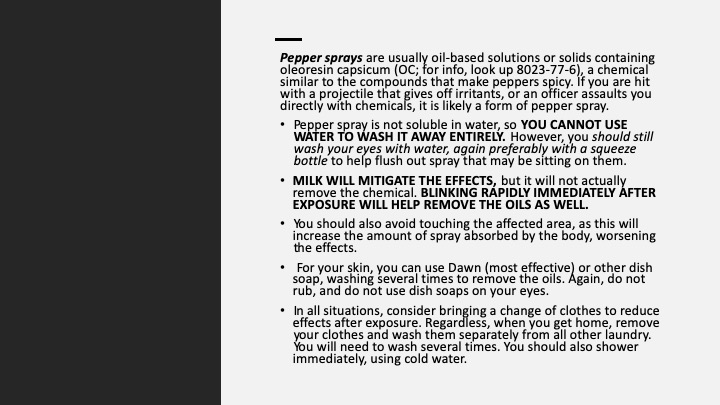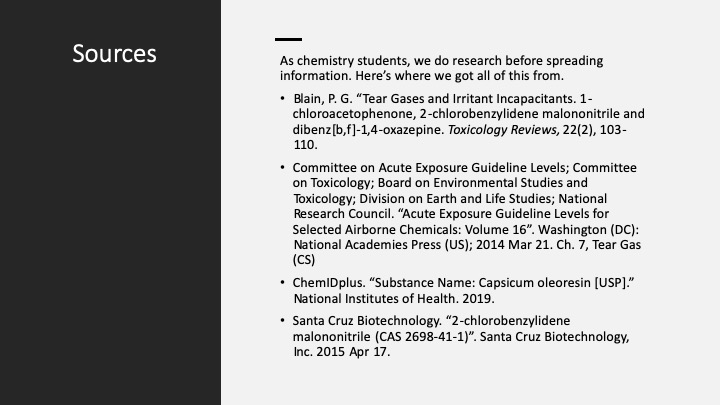Chemistry Students Create Hazardous Materials Guide To Help Protesters Stay Safe
By Emily Payne
Media Inquiries- Associate Dean for Communications, MCS
In cities across the United States, people have been peacefully protesting for racial justice in support of the Black Lives Matter movement. When recent Carnegie Mellon University chemistry graduate Bella Ballin heard about police using chemical agents at such a protest in her hometown, she felt a particular call to action.
“Maybe it was something about it being at home on streets I recognize or maybe it was the thought of people I grew up around getting hurt,” she said.
She knew she could use her training as a chemist to help people protect themselves. As chemists, “we are trained to research and evaluate the hazards of every chemical we work with,” said Ballin.
So, she put out a call to her fellow chemistry majors to create a guide to let people know what to do if they are exposed to chemical irritants at a protest.
Each student researched the most effective and practical ways to treat common agents like tear gas and pepper spray. The group fact checked all of the sources, focusing on peer-reviewed studies and information from biomedical research agencies, including the National Institutes of Health and Santa Cruz Biotechnology, Inc.

Chemistry students pulled their resources to find how to protect people from hazardous materials. They then created a graphic of their resources and disseminated it on social media to help protesters stay safe during recent Black Lives Matter Protests taking place in cities across the United States.

Chemistry students pulled their resources to find how to protect people from hazardous materials. They then created a graphic of their resources and disseminated it on social media to help protesters stay safe during recent Black Lives Matter Protests taking place in cities across the United States.

Chemistry students pulled their resources to find how to protect people from hazardous materials. They then created a graphic of their resources and disseminated it on social media to help protesters stay safe during recent Black Lives Matter Protests taking place in cities across the United States.


Those who contributed to the guide included Ballin and rising chemistry seniors Cali Colliver, Will Fahy, Che Olavarria Gallegos, Jon Goodstein, Jolie Miller, Frances Moore, Sara Nevins, Emily Schneider and Katie Ziegler.
The students also brought their own experience to the table working with hazardous materials in laboratories at Carnegie Mellon.
“Before we start an experiment in a chemistry lab, we have to write up a hazard analysis for everything in the experiment,” said Colliver. This requires a lot of independent research — a skill that came in handy for creating the guide.
Ballin herself has worked with capsaicin, the active compound in peppers that gives them their spicy kick. Pepper spray uses this same compound. Because it’s an oil-like compound, capsaicin repels water but is soluble in dairy-based products, like milk.
“(Capsaicin) is considered a particularly hazardous substance in lab settings, so it made me extra aware of how important it is to know how to treat pepper spray,” said Ballin.
To circulate the guide, Colliver posted it on her public Instagram page and Goodstein shared it on a few Carnegie Mellon Facebook groups.
Getting the guide out there “was important to all of us because we want to make sure everyone can have their voices heard at these protests and stay safe in case chemical weapons are used on them,” noted Colliver.
“#BlackLivesMatter is a movement to make changes against an issue in my community,” added Ballin. She has been following the protests since the beginning, but because she is partially immunocompromised, she has been unable to actively participate during COVID-19.
“It's really difficult to have so much pent up energy and emotion in something and to feel like you aren't doing everything you can. I had done all I could as a regular citizen donating, spreading awareness, but that felt a little like slacktivism so using our training as chemists felt like another way I could contribute.”
The guide has been well-received and shared by several others on social media. CMU mechanical engineering alumna Diya Nuxoll included the guide in a Google doc that she compiled of safe protesting tips for CMU students. Assistant Professor of Chemistry Stefanie Sydlik condensed the guide into one graphic for anyone wishing to share the it beyond the private group, Overhead at Carnegie Mellon. And another group member used optical character recognition to produce a text-only version of the guide in the comments for the visually impaired. Students also shared it with faculty via email to disperse further.
